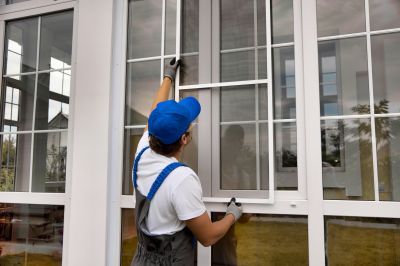Leading Supplies For Storm Restoration Projects You Can Rely On
Choose from high-quality products that support effective restoration efforts after storm-related property damage.
 Storm restoration products are essential tools and materials used to repair and reinforce structures affected by severe weather events. In regions like Cordova, TN, where storms can cause significant damage, having access to a comprehensive range of restoration products is vital for efficient recovery. These products help mitigate further damage, restore structural integrity, and protect homes and businesses from future weather-related threats.
Storm restoration products are essential tools and materials used to repair and reinforce structures affected by severe weather events. In regions like Cordova, TN, where storms can cause significant damage, having access to a comprehensive range of restoration products is vital for efficient recovery. These products help mitigate further damage, restore structural integrity, and protect homes and businesses from future weather-related threats.
Top Overall Option
Multi-Use Weatherproof Sealant
A versatile weatherproof sealant is a key component in storm restoration, offering effective sealing against water intrusion, air leaks, and minor structural gaps. Its adaptability makes it suitable for sealing roofs, windows, siding, and foundations, providing a reliable barrier in storm-prone areas. Easy to apply and compatible with various materials, this sealant can enhance the durability of repairs and help prevent future damage.
Types of Products For Storm Restorations
Roofing Shingles and Panels
Various roofing materials designed to replace or reinforce damaged roofs, available in different styles and materials to suit different structures.
Waterproof Membranes
Protective layers used under roofing or siding to prevent water infiltration and improve overall weather resistance.
Structural Reinforcement Beams
Steel or reinforced wood beams used to strengthen compromised structures after storm damage.
Heavy-Duty Tarps
Durable tarps that provide temporary cover for damaged roofs or openings, shielding from rain and debris.
Sealants and Caulks
Materials used to seal gaps, cracks, and joints in various building components to prevent leaks and drafts.
Siding Repair Kits
Complete sets containing panels, clips, and fasteners for repairing or replacing damaged siding.
Gutter and Drainage Components
Parts designed to restore or improve water runoff systems, preventing water damage to foundations.
Flood Barriers and Sandbags
Temporary barriers to divert water away from properties during flooding events.
Foundation Repair Products
Injectable resins, piers, and stabilizers used to reinforce and stabilize building foundations.
Power Tools and Equipment
Tools such as drills, saws, and generators essential for efficient restoration work.
Emergency Lighting and Safety Gear
Lighting, gloves, helmets, and other safety equipment to ensure safe working conditions during repairs.
Insulation Materials
Insulation products that help improve energy efficiency and protect against moisture intrusion.
Vents and Exhaust Fans
Components used to restore proper ventilation in damaged buildings.
Paints and Coatings
Protective finishes that help seal and preserve repaired surfaces against future weather exposure.
Debris Removal Tools
Shovels, wheelbarrows, and debris bags for clearing storm debris efficiently.
Dehumidifiers and Air Purifiers
Equipment to manage moisture and improve indoor air quality during restoration.
Popular Choices
Widely used for temporary protection of damaged roofs and openings after storms.
Commonly selected for replacing or patching storm-damaged roofing structures.
Popular for sealing leaks and cracks to prevent water intrusion during storms.
Frequently used to divert water and protect properties from flooding.
Essential for restoring water management systems affected by storm damage.
Chosen for their effectiveness in preventing water penetration in vulnerable areas.
Selected for their role in restoring the strength of compromised structures.
In demand for their efficiency in performing various repair tasks quickly.
Popular for restoring energy efficiency and moisture control in affected buildings.
Commonly used for clearing storm debris to facilitate repairs.
Important for ensuring safety during restoration projects.
Often needed to restore proper ventilation in storm-damaged structures.
Applied to protect surfaces and improve the appearance of repaired areas.
Frequently used to control moisture and improve indoor air quality during restoration.
A wide variety of storm restoration supplies exist to address different needs, from repairing damaged roofs and siding to sealing leaks and reinforcing foundations. Proper selection and application of these products can significantly influence the speed and quality of restoration efforts. It is important to understand the different types of materials and tools available to ensure that repairs are durable and effective.
When considering storm restoration products, factors such as durability, ease of installation, compatibility with existing structures, and weather resistance should be taken into account. Quality materials can provide long-term protection and peace of mind, especially in areas prone to frequent or severe storms. Additionally, safety considerations and adherence to local building codes are crucial when selecting and using these products.
Having a well-stocked inventory of storm restoration supplies can help property owners and contractors respond quickly during emergencies, minimizing downtime and preventing further damage. Whether for residential or commercial properties, choosing the right products tailored to specific storm-related challenges ensures more resilient and secure structures in the aftermath of severe weather events.
Key Buying Considerations
- Assess the severity and type of storm damage to determine appropriate products.
- Choose materials compatible with existing building components for seamless repairs.
- Prioritize weather-resistant and durable options to withstand future storms.
- Consider ease of installation, especially for temporary or emergency repairs.
- Evaluate the size and coverage area of products like sealants, membranes, and barriers.
- Check product safety certifications and adherence to local building codes.
- Opt for versatile products that can be used in multiple repair scenarios.
- Factor in the environmental conditions specific to your location, such as humidity or wind exposure.
- Budget for both immediate repair needs and long-term durability.
- Read product reviews and seek recommendations from professionals when possible.
- Ensure availability of replacement parts or additional supplies for ongoing maintenance.
- Consider the weight and portability of products for ease of handling during repairs.
- Look for products with clear application instructions and safety guidelines.
- Evaluate the potential for future repairs and select products that can be reused or easily replaced.
- Assess the need for specialized tools or equipment required for installation.
